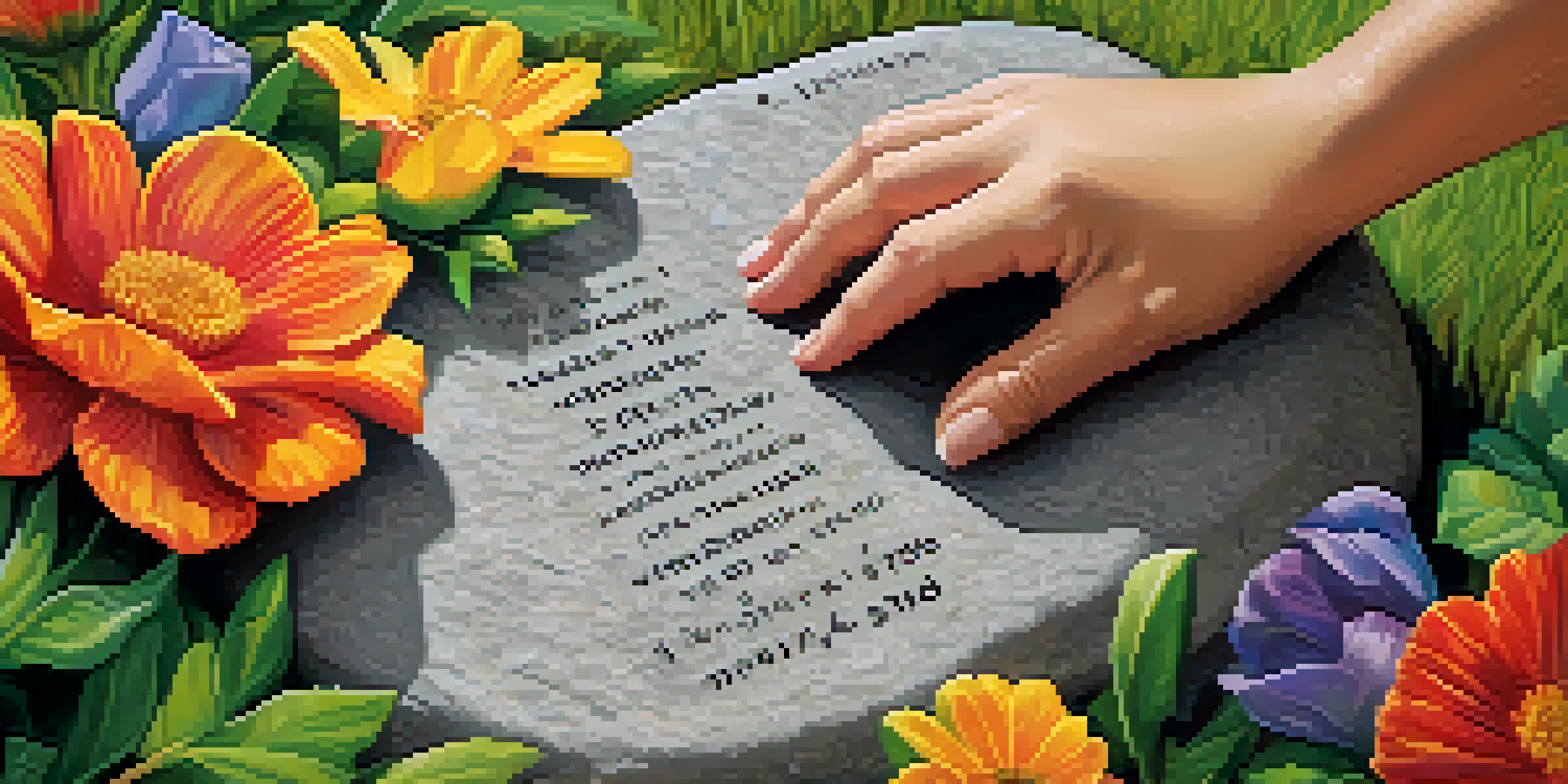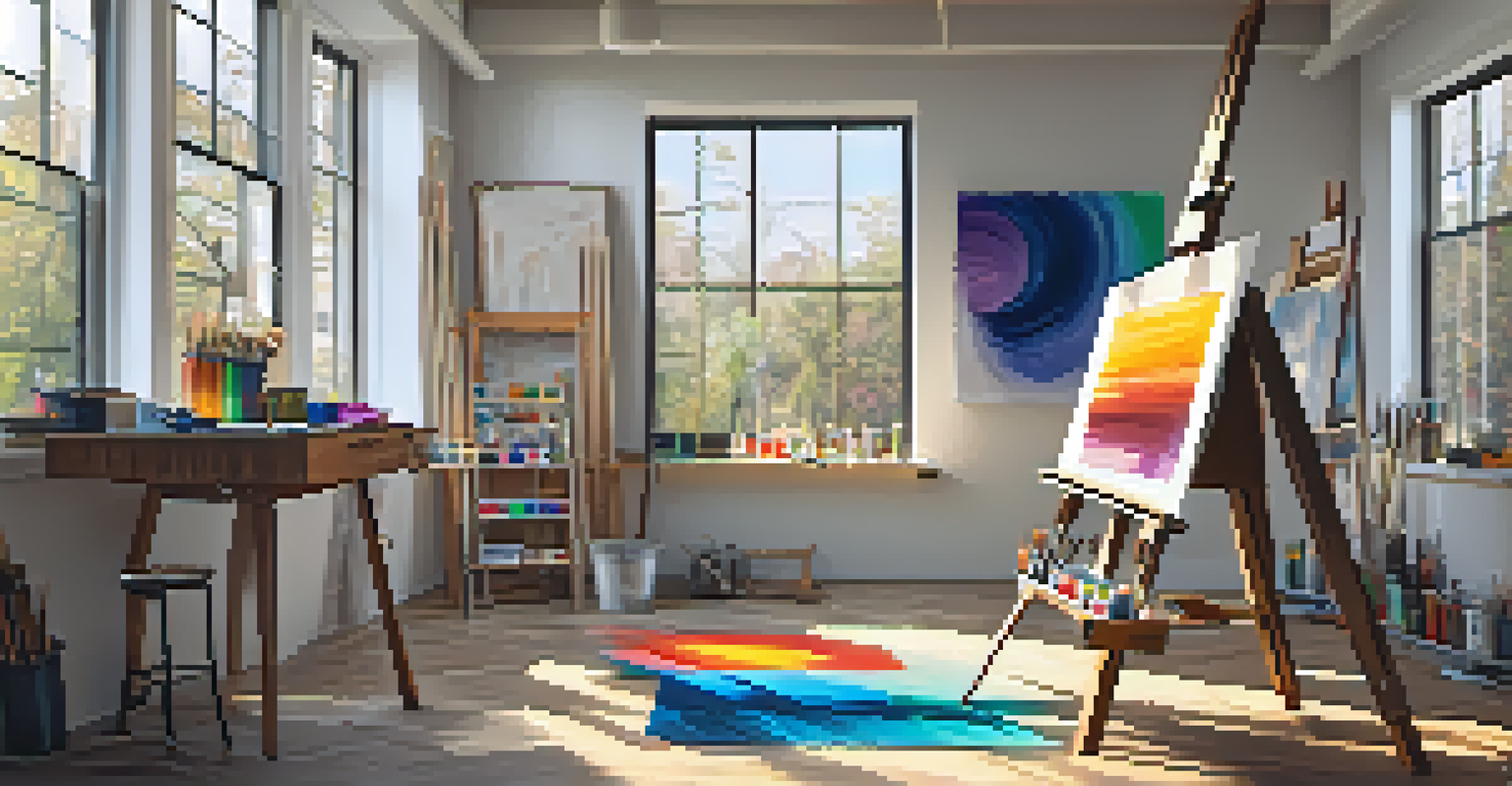Exploring Art as a Means of Processing Grief and Loss

Understanding Grief: A Personal and Unique Experience
Grief is a deeply personal journey, affecting everyone differently. While some may find solace in talking about their feelings, others may struggle with expressing their emotions verbally. This is where art can step in, offering a unique outlet for processing those complex feelings.
Art is the most beautiful of all lies.
Through painting, writing, or music, individuals can tap into their inner thoughts and emotions in a way that feels more comfortable. The act of creating can be cathartic, allowing for a release of pent-up feelings that might be difficult to articulate. In this way, art becomes a bridge between the inner turmoil of grief and the outside world.
Moreover, art can serve as a form of communication with others who may not fully understand what one is going through. By sharing artistic expressions of grief, individuals invite others into their experience, fostering empathy and connection.
The Therapeutic Benefits of Artistic Expression
Engaging in artistic activities can have profound therapeutic benefits. Studies have shown that creating art can reduce stress and anxiety, making it an effective coping mechanism during times of loss. The focus required during the creative process can serve as a distraction from overwhelming emotions, providing a much-needed respite.

Furthermore, art therapy is a recognized form of treatment that specifically helps individuals manage grief and trauma. Trained therapists guide clients through creative exercises that allow them to explore their feelings in a supportive environment. This structured approach can make the process of healing feel more manageable.
Art as a Healing Tool in Grief
Art provides a unique outlet for individuals to process their grief, offering therapeutic benefits through creative expression.
For many, the act of creating becomes a ritual of remembrance, honoring the loved ones they’ve lost. Whether it’s through crafting a memorial piece or writing a heartfelt poem, these artistic expressions can facilitate healing and foster a sense of closure.
Different Forms of Art to Explore in Grieving
Art comes in many forms, and each can be utilized as a tool for processing grief. Visual arts like painting or sculpting allow individuals to express their emotions through colors and shapes, providing a tangible representation of their feelings. This can be particularly helpful for those who struggle to find the right words to convey their sorrow.
The beautiful thing about art is that it can be a way to communicate feelings that are often too difficult to articulate.
Writing, whether through poetry, journaling, or storytelling, offers another powerful avenue for expression. Putting pen to paper can help clarify thoughts and emotions, allowing individuals to reflect on their experiences and find meaning in their pain. It’s often said that literature can give voice to the voiceless, and for many grieving individuals, this is especially true.
Music is yet another medium that resonates deeply with emotions. Creating or listening to music can evoke memories and feelings associated with loss, making it a profound way to connect with one’s grief. Composing a song or simply playing a favorite tune can provide comfort and even spark moments of joy amid the sorrow.
Creating Safe Spaces for Artistic Exploration
Creating a safe space for artistic exploration is essential for those dealing with grief. This space can be physical, such as a dedicated art corner at home, or emotional, where one feels free to express their feelings without judgment. Having a supportive environment encourages creativity and allows for genuine expression.
Many communities offer art workshops specifically designed for those coping with loss. These workshops provide a supportive network where individuals can share their experiences and creations. The sense of community can be incredibly healing, reminding participants that they are not alone in their grief.
Community Enhances Artistic Healing
Engaging with a supportive community fosters connections and shared experiences, making the grieving process feel less isolating.
Additionally, virtual platforms have made it easier than ever to connect with others who share similar experiences. Online art groups and classes allow individuals to explore their feelings through art from the comfort of their own homes, making healing accessible to a wider audience.
Art as a Means of Commemoration and Legacy
Art can serve as a beautiful way to commemorate loved ones who have passed. Creating a piece of art in their honor can be a meaningful tribute, allowing the artist to express their love and memories. This process can help keep the memory of the deceased alive, providing a sense of connection even after they are gone.
Many people find solace in creating memorial art, such as painted stones, personalized photo albums, or even garden sculptures. These tangible reminders can be placed in significant locations, serving as a place to reflect and remember. The act of creating something beautiful in their memory can bring comfort during difficult times.
Through these artistic commemorations, individuals can also share their stories with others, fostering conversations about grief and loss. This sharing can be incredibly therapeutic, not just for the creator but for those who witness and engage with the art.
The Role of Community in Artistic Grieving
Community plays a vital role in the healing journey through art. Engaging with others who are also experiencing grief can create a sense of belonging and understanding. Group art projects or community exhibitions can foster a supportive environment where shared experiences are celebrated and honored.
Participating in community art initiatives can also provide opportunities for personal expression while connecting with others. These collaborations can help break the isolation often felt during the grieving process, reminding individuals that they are part of a larger narrative of shared loss.
Finding Your Voice Through Creation
Exploring artistic expression allows individuals to discover their unique voice in grief, promoting self-discovery and emotional healing.
Moreover, community art projects often serve as a collective form of healing, where individuals come together to create something beautiful out of their pain. This joint expression can lead to a greater understanding of grief's universality, helping all involved feel a little less alone in their struggles.
Finding Your Artistic Voice in Grief
Finding your unique artistic voice can be a transformative part of the grieving process. It encourages exploration and experimentation, allowing individuals to discover what resonates with them most. Whether it’s through painting, writing, or any other form of art, the journey of self-discovery can be healing in itself.
It’s important to remember that there are no wrong ways to express grief through art. Each person’s journey is unique, and what works for one may not work for another. Embracing the freedom to create without judgment can lead to profound insights and emotional breakthroughs.

Ultimately, the goal is not to create a masterpiece but to express oneself authentically. This genuine expression can pave the way toward healing, helping individuals navigate their feelings of loss and find peace in their artistic journey.